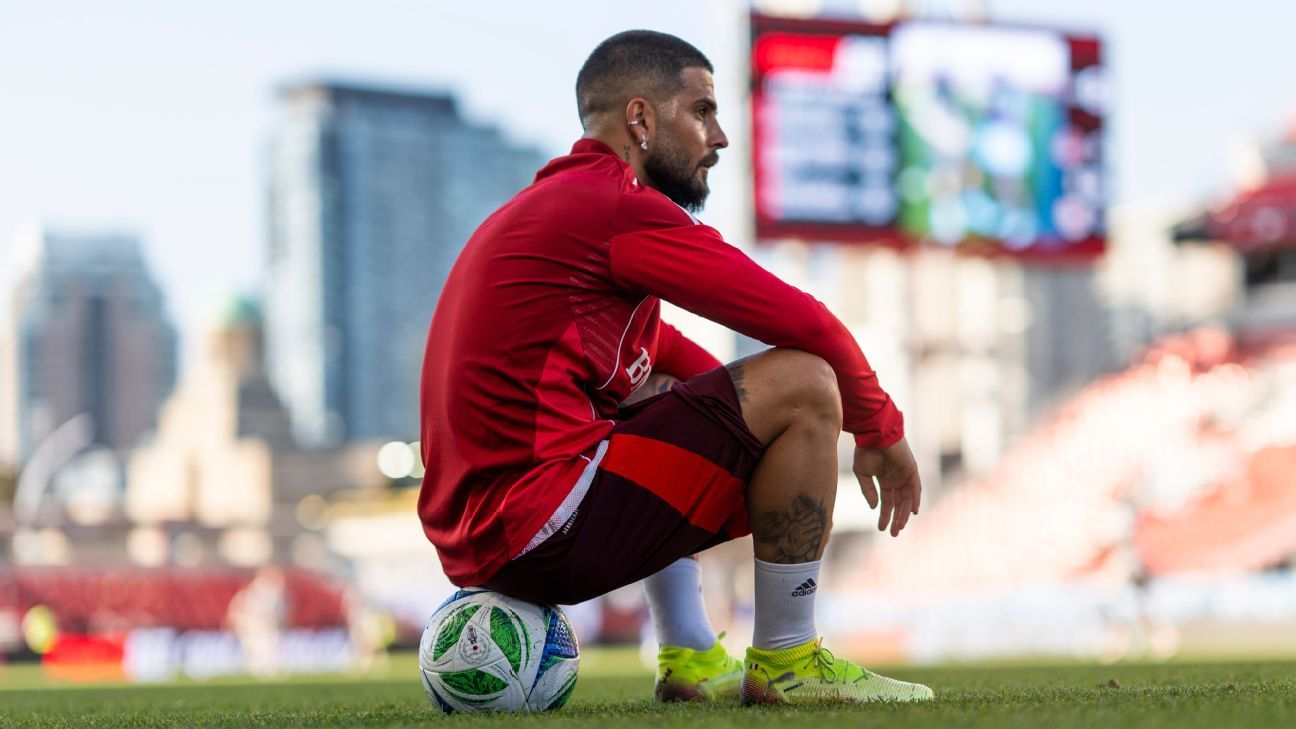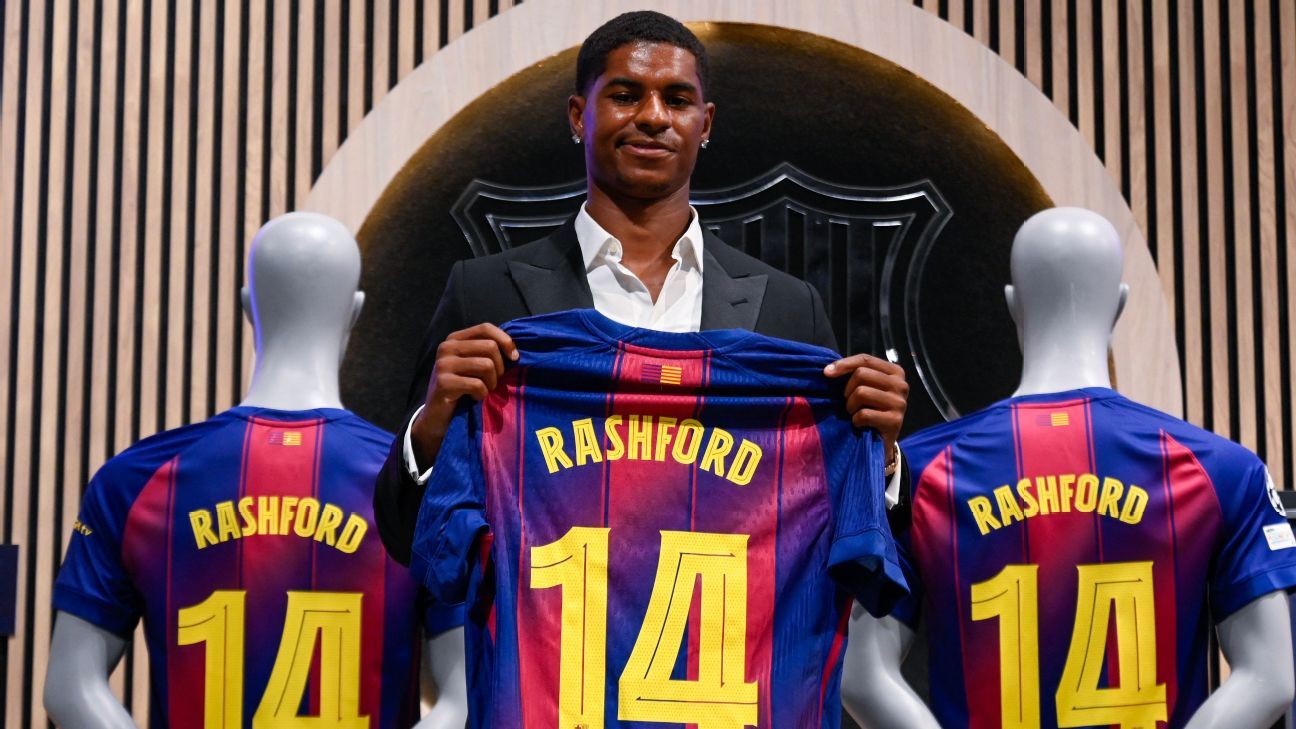Buyer beware: The gamble MLS clubs make with designated players

On Thursday, the MLS summer transfer window opens and teams will be trotting out those players they think can push them into the league’s elite not just this season, but in campaigns to come. But as recent windows have shown, such business should come affixed with a label that reads “Buyer Beware.”
The tenures of the Toronto FC duo of Lorenzo Insigne and Federico Bernardeschi — who, according to the MLS Players Association were making $15.4 million and $6.3 million, respectively — were so disastrous that the club mutually agreed to terminate their contracts and allow them to leave as free agents. Insigne exited with 15 goals and 10 assists over four seasons, and while Bernardeschi was more productive, with 25 goals and 12 assists over the same period, his departure was still viewed as addition by subtraction. TFC didn’t make the postseason in any of the years the two players were on their roster.
A few days earlier and three time zones away, LAFC came to a similar decision with forward Olivier Giroud, mutually agreeing to terminate his contract so he could join Ligue 1 side Lille. His final tally was three goals, four assists in 21 league appearances totaling 1,136 minutes. While he did score the opening goal in last year’s U.S. Open Cup final win over Sporting Kansas City, overall it seemed scant return for a player in possession of a FIFA World Cup winner’s medal.
How, then, can teams avoid the potential pitfalls that come with a designated player (DP) acquisition?
For a start, it requires an immense amount of homework given the stakes, especially if the name involved isn’t Lionel Messi. The complications go well beyond just looking at a player’s on-field résumé as well: there’s the ability to fit with a team’s system, language barriers, injury history, as well as adaptability to league-wide issues like weather and travel.
Then there are questions about what kind of DP a team is targeting. Do they want an older player making the final stop in his career, or is it a younger player with eyes on Europe who might one day garner a hefty transfer fee? Is the player’s stature so large that they can impact attendance and sponsorship? In Giroud’s case, he checked a lot of boxes, but his inability to fit with an LAFC style that emphasized transition was his undoing.
“When they’re successful is when they adapt to the style of play, you get that right and you get the right fit into the group and with your technical staff. I think that’s number one,” said Houston Dynamo general manager Pat Onstad. “And then number two for them is how do they adapt off the field. Are they comfortable when they get in? I think those are kind of the two big ones to get right.”
More than anything, a player’s motivation plays a huge part in how productive they are. Part of the reason why Inter Miami CF has been so successful with Messi, Sergio Busquets and Jordi Alba is that they’ve approached MLS with the required level of competitiveness.
LA Galaxy manager Greg Vanney has seen the highs and lows of DP acquisitions both in his time with his current club and his previous stop with Toronto FC. When asked why a player like Sebastian Giovinco was successful with the Reds and Jermain Defoe wasn’t, he was blunt.
“Not to be rude about it, but it’s character, if I’m being honest,” he said.
Vanney felt that Defoe was there to score goals and enjoy the lifestyle that came with living in Toronto. Giovinco’s motivation was different.
“Giovinco wanted to be the man, but in a way that was defined by scoring goals and winning championships,” Vanney said. “He cared about his legacy and winning was the reason he came.”
For Vanney, it’s also about targeting players who fit a team’s specific needs as opposed to being smitten by a player’s pedigree. He emits a rueful laugh about the subject, a tacit admission that bringing in a high-profile player like Douglas Costa (formerly of Shakhtar Donetsk, Bayern Munich and Juventus) didn’t have the payoff he desired. The Galaxy hit the jackpot last year when the triumvirate of Gabriel Pec, Riqui Puig and Joseph Paintsil led the club to its sixth MLS Cup. In Toronto, it was Giovinco, Jozy Altidore and Michael Bradley who pushed TFC into the league’s stratosphere. In both cases, the players complemented each other, allowing the other pieces around them to collectively shine.
“Trying to say, ‘Oh, there’s a really good player and they’re available’ and then fitting them into your needs is not usually the most successful way to go about it,” Vanney said. “But if you go, ‘These are the needs, these are the players that we know are out there that can fill those needs, can we go get them?’ That tends to be a more successful route, I think.”
Finding that out ahead of time is a challenge. It requires considerable research into the player’s background as it relates to the kind of person he is, which is much easier said than done.
“I think if you’re going to spend Designated Player money, I think you want to sit down and meet them face to face, and break bread with them and try to understand what their motivations are,” said Onstad. “And I think there’s been, certainly in our experience — we’ve talked to a few DPs, and after the conversation have realized it’s probably not the right project for [everyone].
“You’ve got to be careful and make sure you get guys here that are hungry, who want to keep growing and who want a challenge. Those are the ones I think have been the most successful here in our league.”
But Vanney notes that players these days are adept at handling interviews with prospective teams. That puts a priority on reaching out to contacts who are familiar with the player from previous stops. People on the medical side need to be consulted in order to delve into the player’s injury history. Looking at the player’s training habits is another indicator. Certain leagues whose players have a history of success in MLS is considered as well.
“I think Belgium is a league that maybe the players aren’t the most expensive, but I feel like they’re a league that players who have done well in Belgium actually come to our league and generally do pretty well,” said Vanney. “I think there’s a lot of similarities between our leagues. And so there’s also some things to figure out there and where you’re getting the player from and what are the tendencies or what are the crossovers between that league and our league and things like that that you want to think about.”
Another predictor of success — or difficulty — is whether the player has played outside of his home country before. FC Cincinnati general manager Chris Albright has experienced both ends of the DP spectrum through now-Udinese striker Brenner and current FCC midfielder Evander. Brenner had only ever played in his native Brazil, while Evander had performed in Denmark and in MLS with the Portland Timbers. While Brenner delivered goals — 27 in 70 league appearances — there were other issues, including him requesting a transfer in 2022.
“We had to be at the training ground for Brenner to understand certain levels of professionalism, culture, nutrition, timeliness, whatever it may be,” said Albright. “Whereas Evander going to Denmark and learning all that, he was much more refined as a professional, so that now we can really work around the edges and push him in other categories. We don’t have to worry about the babysitting sort of aspect of it.”
Albright has a slightly different take on the character issue as well, referring to it as “self-awareness,” which includes issues of adaptability. In addition to things like travel and weather, the salary cap structure can throw DPs into situations where the level of experience of their teammates — or the lack of it — is something they aren’t used to.
“You’ve got Insigne out there with some 16-year-old homegrown kid and some kid that just played at Slippery Rock six months ago, and it takes a certain type of personality to be accepting of that when you’ve come from Napoli,” said Albright. “And if you don’t have that openness, things can go sideways.
“Being self-aware is — literally the longer I’m in this — the most important characteristic for everyone; yourself, the players. And so guys that are just not self-aware of where they are at the stage of their career and try to be something they’re not, [not] accepting of where they are, I just think [that’s why] a lot of the guys that have failed just can’t come to grips with where they are in their career arc.”
Player care after they arrive is critical as well, which is especially true if the player is bringing a spouse or children with them. There are doctors and schools and a support network to figure out. The time spent on the road can be more than immediate family is used to, creating some lonely moments. Having a support staff to manage these issues is common in MLS these days, but its importance hasn’t lessened. An unhappy home life can do plenty to distract a player.
“We try to be supportive in every way we can,” said Albright about the team’s level of player care. “We’re very fortunate in Cincinnati that we’re a phone call away from anybody, anything. It’s maybe a little different when you’re in these gigantic markets. So yeah, we understand that that’s a big part of it. That’s a big part of how we recruit. And so we try to back that up once the guy’s in the building.”
Albright has hit something of a sweet spot with the team’s DPs in that he has Evander and Kévin Denkey; a creator and finisher. When ball-winning midfielder Obinna Nwobodo was healthy, that was even more the case, although he’s no longer a DP. But it hasn’t always been that way either for FCC, especially when he had to contend with the difficulties that arose with Brenner and Aaron Boupendza (who sadly died earlier this year). Even with all of the support, there are no guarantees, and that can one day lead to the difficult decision to move on from a DP, no matter how much money has been invested.
“It’s super difficult, right? Because you’re always sitting there wishing more, and projecting more and well, if they just did something differently, if the coach just played them like this, then he would truly be [a DP],” Albright said. “And so you have to really be honest with yourself and self-aware of what your biases are because you backed this. Just try to strip it down and talk to people you trust and have people around you that tell you you’re wrong. That’s super important.”
With all of these lessons learned, has there been a shift in terms of what kind of DPs MLS teams are going after? Albright feels that DPs are definitely trending younger.
“[Denkey] really breaks the mold in a different way,” he said. “We’ve never gotten Belgium’s leading scorer at 23 years old.”
But there will likely always be a market for big-name players. While the Galaxy’s Marco Reus isn’t a DP, he remains a big name. Vanney said he’s satisfied with what the former Germany international has produced amid a difficult season for the team, contributing five goals and seven assists, as well as mentoring younger players. Vanney wouldn’t be averse to acquiring such a player again, even as Reus has struggled with injuries.
“The United States, we’re such a huge sporting market,” Vanney said. “I don’t know that the sport would carry the same cachet if we just went with all younger DPs who don’t have names yet, but we hope to build their names in the future and all.”
Then there is the question of what the DP Rule will look like in the future. Will these players be folded into the full roster budget, or will they continue to exist outside of it?
Either way, as teams interact with the marketplace, they’ll need to remain on their guard and do their homework.
[title_words_as_hashtags



